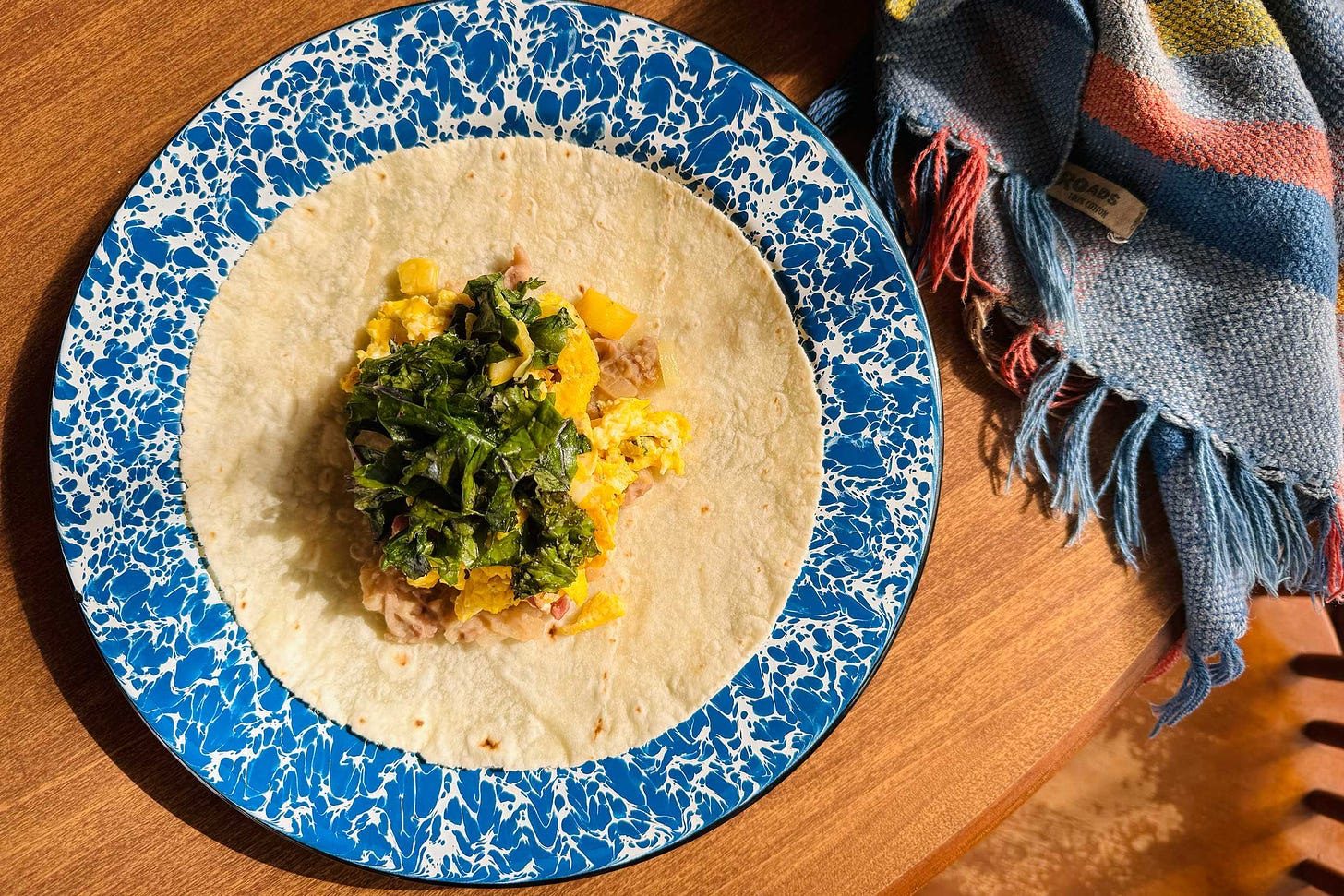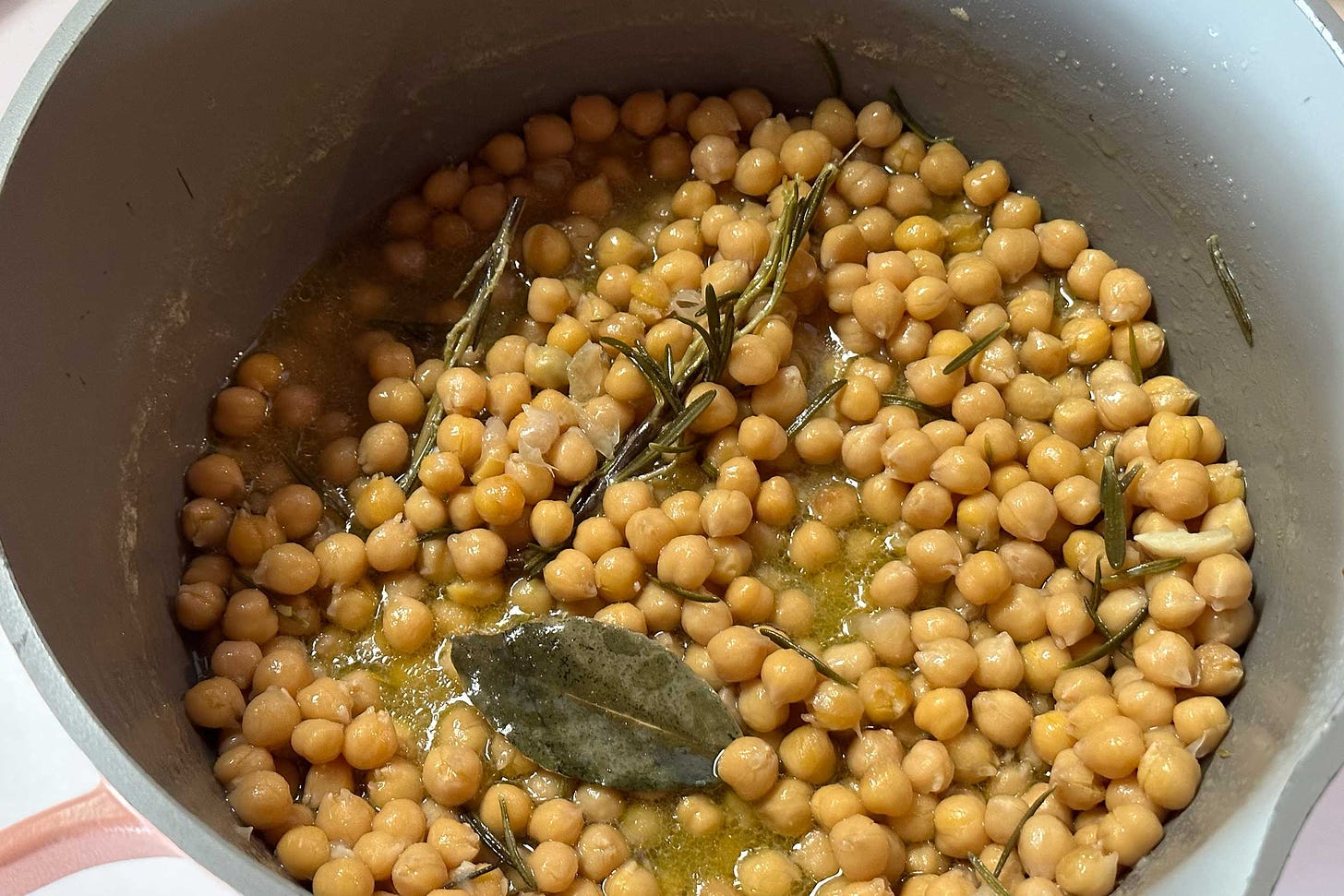Happy 2024, and welcome back to Cool Beans! We’re spending January getting back to basics—and knocking down the hurdles that can trip up anyone who’s new (or new-ish) to plant-based eating. That’s why this week’s newsletter is devoted to our beloved mascot, the humble bean. Beans are cheap, versatile, filling, and pantry-friendly. Canned varieties are also a perfect plant-forward kitchen shortcut, but I want to encourage you to step outside the can and embrace the dried bean.
Yes, they take longer to cook, but they’re way cheaper and just generally better: Cooking beans from scratch lets you infuse your beanie babies with tons of flavor, and they have an al dente, yet creamy texture that you just can’t get from a can. If you’ve been too intimidated to cook dried beans before, then this abbreviated master class is for you.
The Review: The beans that made my breakfast burritos

My 2024 resolution is to eat more breakfast burritos. Lately, I’ve come to rely on store-bought microwavable ones, largely because I’ve avoided making my own refried beans at home and find the canned varieties unappetizingly pasty. Knowing full well that better beans make better burritos, I decided to make my own refrieds using this recipe I’ve had bookmarked from Heidi Swanson at 101 Cookbooks.
I’ll state the obvious first: Making refried beans is not quick. The pinto-based recipe requires an overnight soak, a long simmer, and the eponymous refry, which goes like this: After a smash with a fork or potato masher, the cooked beans sauté in onions and olive oil along with some of the bean broth. The pintos simmer away, with more broth getting added until they reach your desired consistency. I like mine on the thicker side, so this step only took about 10 minutes, but if you like a smooth mash it could take closer to 15 to 20. A dash of paprika and a final hit of salt and the beans are done.
Check out our new go-to refried bean recipe at 101 Cookbooks
The upshot? Canned refried beans are officially ruined for me now. The results taste 10 times better than store-bought, and I love how I’m able to control the seasoning and texture to keep the beans a bit chunky. I immediately piled them onto a tortilla with eggs, kale, and other veggies. Breakfast burrito achievement unlocked.
I can’t wait to try this method with other legumes like black beans. I’ll definitely be adding some aromatics to the pot to infuse even more flavor—because dialing in your preferred zing is the whole point of skipping the can to begin with.
The Guide: Cooking beans from scratch
When it comes to convenience, canned beans come out on top every time. When it comes to taste, however, dried beans are the GOAT. Canned beans (which also start as dried beans, by the way) are kinda blah because they actually get cooked inside the vessel, which is what keeps them sterile. The legumes also have a tendency to absorb the metallic taste of the aluminum. Plus, the precooked beans hue toward mushy. Dried beans are texturally superior (bite on the outside, creamy on the inside) and take on seasoning better than their tinned counterparts.
What follows is my go-to preparation for a pot of chickpeas—for mixing into pasta, piling on toast, or packing into a frittata—and a quick template for cooking whatever dried beans you’ve got stashed in the pantry.





